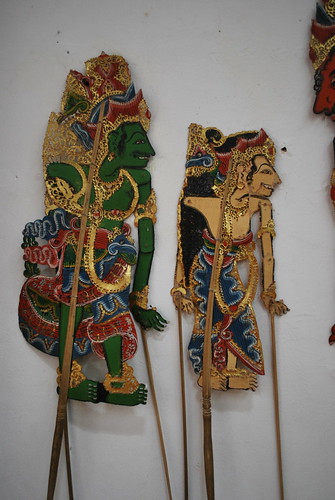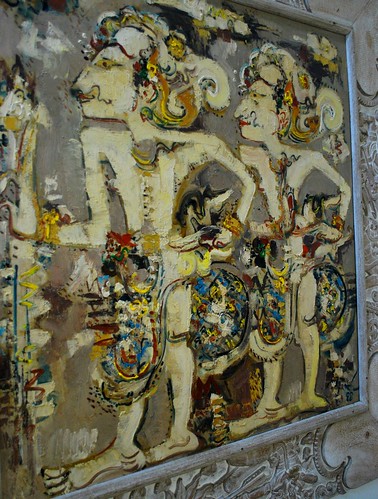Shadow Puppets
Today, I would like to talk about something that has nothing to do with pottery. Today's topic is about shadow puppets and its importance to Balinese art.

Antique shadow puppets in Neka Musem
Early July, I went to Bali for a friend's wedding and was on the hunt for an Indonesian shadow puppet. I always have a thing for shadow puppets and already own a pair of Chinese shadow puppets from Beijing. Looking for a Balinese puppet was simply adding one more to my collection and with the possibility of playing it with my other two.
However, it was after visiting the well-respected Neka Museum in Ubud that made me realize how important shadow puppets are to both traditional and contemporary Balinese art. Balinese shadow puppets played a far more important role in the development of Balinese paintings, and it is the source of inspiration for many painters. In the first phase of Balinese traditional painting, one can often see depiction of figures with features almost indentical to shadow puppets. I suspect this style of drawings emerged from story-telling or religous text. Nevertheless, Neo-Balinese paintings still retain and extend the same style of drawings. Photos above and below demonstrate the similarity in facial features of a shadow puppet and a contemporary Balinese painting of two figures. Now, I look at my Indonesian puppet with a total different view. I'm sure I will still play it with my other puppets, but I will always think about the meaning of this puppet (though I doubted it is a real antique) and what it brings to Balinese art. I'm glad I went to Neka Musem, and I'm glad I bought the shadow puppet.


<< Home